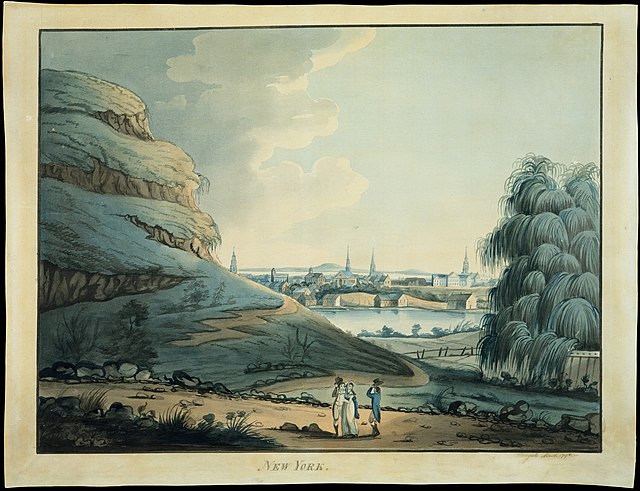A single event can have strange historical ripples.
In 1702 a yellow fever epidemic wiped out 10% of the population in less than three months. This was five hundred people out of a population of five thousand.
The city attempted to deal with recurrent outbreaks by regulating livestock inside the city limits. They also moved slaughterhouses and leather tan yards to the area around Collect Pond, where Foley’s Square is now.
This didn’t help much as they didn’t understand how it was spread.
Another attempted solution was to quarantine the infected. A farm outside the city limits named Belle Vue was bought in 1798 by the downtown hospital for this reason. It became Bellevue Hospital.
The next year, in 1799, before famously shooting someone in a duel, Aaron Burr received a commission from the city to develop a water supply company which he named the Manhattan Company. It is now better known for its financial arm, the Bank of Manhattan which morphed in JP Morgan Chase.

The company lay some wooden pipe. Unfortunately, their source was Collect Pond which, as noted above, was not a great source of clean water. In fact, in 1803 the pond was so polluted, the city decided to drain it. A canal was dug to the Hudson River. That canal was later backfilled and is now Canal Street. Where Collect Pond was, became Five Points.
This is in New York City Little Black Book.


Recent Comments